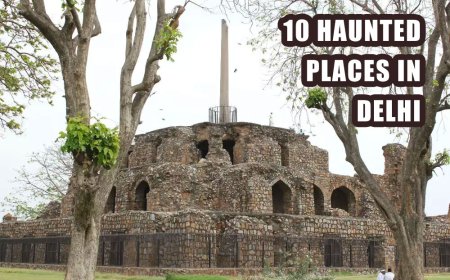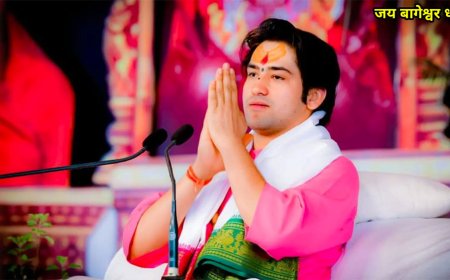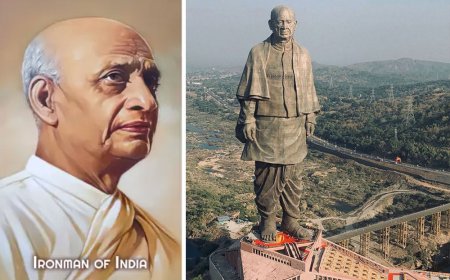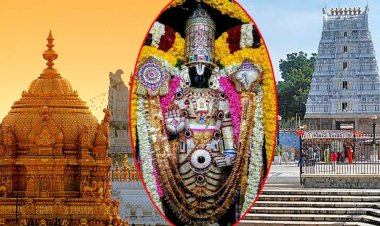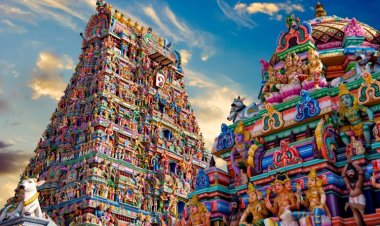Somnath Jyotirlinga: The Eternal Shrine of Light and Divinity
The Somnath Jyotirlinga, located in the Prabhas Patan area near Veraval in Gujarat, is revered as one of the twelve Jyotirlingas of Lord Shiva and is believed to be the first of these sacred shrines. The name Somnath translates to "Lord of the Moon," and the temple is celebrated as a symbol of resilience, as it has withstood multiple invasions and reconstructions over the centuries.

The Somnath Jyotirlinga, located in the Prabhas Patan area near Veraval in Gujarat, is revered as one of the twelve Jyotirlingas of Lord Shiva and is believed to be the first of these sacred shrines. The name Somnath translates to "Lord of the Moon," and the temple is celebrated as a symbol of resilience, as it has withstood multiple invasions and reconstructions over the centuries.
Steeped in history, mythology, and spirituality, Somnath is more than a temple; it is a powerful testament to India's ancient cultural heritage and unbreakable faith. This blog delves into the intricate details of the Somnath Jyotirlinga, from its legends and architecture to its importance in Hinduism.
The Legend and Significance of Somnath Jyotirlinga
The legend of Somnath is tied to Chandra, the moon god, who was cursed by his father-in-law, Daksha Prajapati, due to favouritism shown towards his wife, Rohini, among his 27 wives (all daughters of Daksha). Daksha cursed Chandra, causing him to gradually lose his brightness. In despair, Chandra prayed to Lord Shiva at the site where the Somnath Jyotirlinga now stands. Moved by Chandra's devotion, Lord Shiva lifted the curse partially, allowing him to wax and wane, thus creating the lunar cycle. In gratitude, Chandra built the Somnath temple in honour of Lord Shiva.
This legend imbues Somnath with a deeper significance, symbolizing rejuvenation, hope, and new beginnings. Devotees believe that visiting Somnath Jyotirlinga can help restore health, cure ailments, and bring balance to one’s life, just as Shiva restored the moon’s radiance.
Historical Background and Resilience of the Somnath Temple
The Somnath Temple has a turbulent yet inspiring history. It has been destroyed and rebuilt several times over the centuries, standing as a symbol of unwavering faith and resilience:
- Ancient Beginnings: The earliest records suggest that the temple was initially built in gold by the Moon God, silver by Ravana, sandalwood by Lord Krishna, and eventually in stone by King Bhimdev of Gujarat in the 11th century.
- Repeated Invasions: The temple's wealth attracted numerous invasions. It was first destroyed in 1024 by Mahmud of Ghazni, who looted its treasures and desecrated the shrine. The temple was subsequently rebuilt, but it faced further attacks by Alauddin Khilji’s forces in the 14th century, by the Portuguese in the 16th century, and by Mughal Emperor Aurangzeb in the 17th century.
- Modern Reconstruction: The current structure was reconstructed in 1951, under the guidance of India’s first Home Minister, Sardar Vallabhbhai Patel. The temple's design adheres to the Chalukya style of architecture, showcasing intricate craftsmanship and durability. This final reconstruction ensured that Somnath would forever stand as a pillar of spiritual and cultural strength.
Architectural Grandeur of Somnath Temple
The present-day Somnath temple is an architectural marvel, built in the Chalukya style, known for its intricate carvings, ornate pillars, and grand spires. The temple’s architecture reflects the skill and artistry of the ancient craftsmen, with details that embody deep spiritual significance.
- Shikhara and Mandapa: The towering Shikhara (spire) of the temple stands at an impressive height of 155 feet, reaching toward the sky as if connecting the earth to the divine. Inside, the temple has a vast Mandapa (pillared hall), adorned with delicate carvings depicting scenes from Hindu mythology.
- Garbhagriha (Sanctum Sanctorum): The Garbhagriha, where the main Jyotirlinga is enshrined, exudes a serene energy. The Jyotirlinga itself, believed to be self-manifested, is a smooth, dark stone that radiates with spiritual energy, offering a profound experience for devotees.
- The Iron Arrow Pillar: Known as the Baan Stambh, this pillar, situated on the seashore behind the temple, carries an inscription that claims that there is no land in a straight line between Somnath and the South Pole. This pillar emphasizes the temple’s alignment and deep cosmic significance.
Rituals and Festivals at Somnath Temple
The Somnath Jyotirlinga is the centre of numerous rituals, pujas, and grand celebrations, attracting thousands of devotees throughout the year:
- Daily Puja and Aarti: The day at Somnath begins with early morning Aarti (worship), followed by a series of rituals until the evening Aarti. The temple performs Shringar and Abhishekam (sacred bath) rituals for the Jyotirlinga, where the deity is adorned with flowers, sandal paste, and offerings.
- Mahashivratri Festival: This grand festival is celebrated with unmatched fervour at Somnath, usually in February or March. Thousands of devotees gather here to observe fasts, sing hymns, and participate in night-long prayers and rituals to honor Lord Shiva.
- Kartik Purnima: This full moon day, occurring in November, is another important occasion. Pilgrims gather for a holy dip in the nearby Triveni Sangam (confluence of rivers), followed by temple visits and prayers.
- Somvati Amavasya: Celebrated when a new moon falls on a Monday, this day is deemed especially auspicious for worshipping Shiva. Devotees perform special prayers and offer Bel (bael) leaves to the deity for blessings.
The Spiritual Experience at Somnath
Somnath Jyotirlinga is considered a place of immense healing and transformation. Visiting Somnath is believed to cleanse one’s mind, body, and soul, and bring a deeper connection to the divine. The energy within the temple is said to bring calm, a sense of purpose, and spiritual clarity.
Devotees offer Bel Patra (bael leaves), chant Shiva mantras and meditate on the temple premises, where the waves from the Arabian Sea create a serene ambience, enhancing the meditative atmosphere. The sanctity of Somnath is such that devotees often report experiencing peace, protection, and divine grace.
Triveni Sangam: The Sacred Confluence
Nearby, the Triveni Sangam marks the confluence of three rivers: Saraswati, Hiran, and Kapila. It is considered a sacred site, where devotees take ritual baths before entering the Somnath temple. Bathing here is believed to cleanse one of the sins and prepare the devotee for their visit to the Jyotirlinga. The Sangam adds another layer of spiritual depth to the experience of Somnath, marking it as a holistic pilgrimage that purifies both externally and internally.
How to Reach Somnath Jyotirlinga
Somnath Temple is well-connected by air, train, and road:
- By Air: The nearest airport is in Diu, approximately 63 kilometres away, and has flights from major cities. Another option is the Rajkot Airport, around 200 kilometres away.
- By Train: Veraval, about 7 kilometres from Somnath, is the nearest railway station, with regular trains connecting it to various parts of Gujarat and beyond.
- By Road: Somnath is easily accessible by road and is well-connected to cities like Ahmedabad, Rajkot, and Dwarka by state and private buses, as well as cabs.
Places to Visit Near Somnath Temple
For those planning a pilgrimage, Somnath offers several other attractions:
- Bhalka Tirtha: This is where Lord Krishna is said to have been struck by a hunter’s arrow, marking the place of his departure from the earth.
- Gita Mandir: Built by the Birla family, this temple is dedicated to Lord Krishna and features inscriptions of the Bhagavad Gita.
- Prabhas Patan Museum: This museum preserves ancient artifacts, sculptures, and inscriptions recovered from the original Somnath temples, offering a glimpse into the temple's storied past.
- Diu: Located about 63 kilometres away, Diu offers beautiful beaches, forts, and a Portuguese-influenced culture, making it a peaceful and scenic extension of the pilgrimage.
Final Thoughts: Somnath - A Timeless Pilgrimage
The Somnath Jyotirlinga is more than just a sacred temple; it is a symbol of resilience, faith, and devotion. Its rich history, blending mythology with reality, and its ability to withstand the ravages of time and invasions, make it a profound emblem of India’s spiritual strength. The beauty of the temple, the surrounding sea, and the reverence of the Jyotirlinga inspire devotees and visitors alike to experience a profound connection to the divine.
Visiting Somnath is a journey into India's ancient soul, where history, mythology, and spirituality merge, leaving a lasting impact on all who seek solace and divine blessings at this eternal Jyotirlinga.
What's Your Reaction?
 Like
0
Like
0
 Dislike
0
Dislike
0
 Love
0
Love
0
 Funny
0
Funny
0
 Angry
0
Angry
0
 Sad
0
Sad
0
 Wow
0
Wow
0















